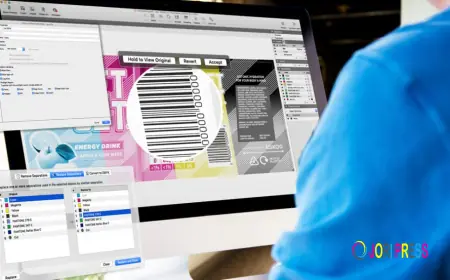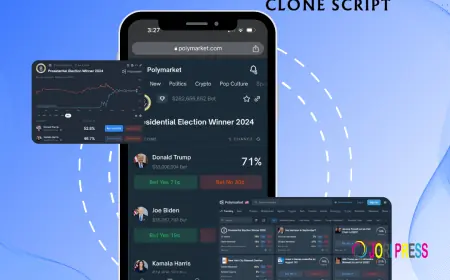How Long Does It Take to Turn a Crypto Exchange Idea Into a Live Platform?
Learn how long it takes to turn a crypto exchange idea into a live platform. Explore key steps, timelines, and insights for smooth and successful cryptocurrency exchange development.

Table of Contents
Introduction
Understanding the Journey from Idea to Launch
Planning the Foundation of a Crypto Exchange
Designing the User-Friendly Interface
Development Phases of a Crypto Exchange
Testing and Security Implementation
Launching and Post-Launch Support
Key Factors That Affect the Timeline
Conclusion: The Realistic Timeframe for Cryptocurrency Exchange Development
Introduction
Building a Crypto Exchange is an exciting journey for entrepreneurs stepping into the digital finance world. However, one of the most common questions people ask before beginning this journey is: How long will it take to make my idea a reality?
Creating an exchange involves more than just writing code; it requires planning, design, technical development, and strong security measures. Each stage contributes to the overall timeline and ensures that your platform is reliable, user-friendly, and ready for global use.
Let’s explore the stages of development in a simple, easy-to-understand flow that helps you estimate how much time it might take to turn your Crypto Exchange idea into a live and successful platform.
Understanding the Journey from Idea to Launch
Every Crypto Exchange starts as an idea, but transforming that concept into a live platform is a step-by-step process. Typically, it takes around six to nine months to develop a fully functional exchange. The timeline can vary based on project complexity, design preferences, and technical integrations.
The journey moves through several key stages: planning, design, development, testing, and launch. Each step has its own importance, and rushing through them can affect the platform’s quality. A well-paced approach ensures the exchange is both secure and efficient once it goes live.
Planning the Foundation of a Crypto Exchange
The foundation of your Crypto Exchange begins with detailed planning. This stage generally takes three to four weeks and sets the direction for the entire project.
Key steps in this phase include:
-
Defining your target audience and business goals.
-
Deciding what type of exchange to build (centralized, decentralized, or hybrid).
-
Identifying your must-have features, such as trading pairs, order types, and wallet integrations.
-
Conducting market and competitor research.
-
Setting realistic milestones and development timelines.
A well-planned foundation ensures smoother progress in later stages and prevents unnecessary revisions or delays. It’s the blueprint that turns your idea into a workable project.
Designing the User-Friendly Interface
Once your plan is finalized, it’s time to focus on design. The Crypto Exchange interface is the face of your platform the first thing users interact with. A clean and user-friendly design helps build trust and improves user engagement.
This stage often takes around four to six weeks. Designers work on creating dashboards, trading views, and account management screens. The goal is to make everything intuitive so users can easily navigate and perform trades without confusion.
A well-designed platform doesn’t just look good; it feels effortless to use. Remember, in the competitive world of crypto trading, design plays a huge role in retaining users.
Development Phases of a Crypto Exchange
After design approval, the development stage begins at the heart of building a Crypto Exchange. This is usually the most time-consuming phase and can take three to five months depending on the scope.
Core areas of development include:
-
Backend Development: Creating the server logic, APIs, and database structure to manage user data and transactions.
-
Frontend Development: Building the trading dashboards, user panels, and responsive web design.
-
Wallet Integration: Enabling secure storage and movement of digital assets.
-
Security Implementation: Adding encryption, two-factor authentication, and DDoS protection.
Developers also ensure scalability so the platform can handle thousands of users without performance issues. The end goal is to create a reliable, secure, and efficient Crypto Exchange that performs well under all conditions.
Testing and Security Implementation
Once development is complete, the platform goes through thorough testing. This step ensures that the Crypto Exchange operates smoothly and safely before being opened to users.
Testing typically lasts three to five weeks and involves multiple checks:
-
Functional Testing: Verifying that all features work as intended from account creation to order execution.
-
Performance Testing: Ensuring the system can handle heavy trading activity.
-
Security Testing: Conducting audits and penetration tests to prevent hacks or data leaks.
No exchange should launch without proper security testing. A single vulnerability can cause huge financial and reputational losses. Investing time in this phase guarantees a secure and trusted platform.
Launching and Post-Launch Support
After successful testing, it’s time to launch your Crypto Exchange. This process usually takes a couple of weeks and involves setting up servers, deploying the application, and preparing for user onboarding.
The first few weeks after launch are critical. Post-launch support helps identify and fix minor issues, optimize performance, and introduce updates. Developers monitor system stability, handle user feedback, and ensure smooth trading experiences.
Launching a platform is not the end of the journey, it's the beginning of continuous improvement and growth.
Key Factors That Affect the Timeline
Not every project takes the same amount of time. Several factors influence how long it will take to bring your Crypto Exchange to life.
Here are some major factors to consider:
Complexity of Features: A simple exchange with basic trading functions takes less time than one with advanced tools like futures trading or automated bots.
Technology Stack: The programming languages and frameworks used can affect both speed and efficiency.
Customization Level: Using a white-label solution can shorten the timeline, while building from scratch requires more time.
Team Experience: Skilled developers and project managers can handle challenges more efficiently, reducing delays.
Regulatory Compliance: Meeting international standards for KYC, AML, and financial security can add time but is vital for long-term success.
In general, if you choose an experienced development team and plan carefully, your project can move faster without compromising on quality.
Conclusion: The Realistic Timeframe for Cryptocurrency Exchange Development
Turning an idea into a fully functioning Crypto Exchange is an exciting yet challenging journey. On average, it takes between six and nine months to go from concept to launch. The exact duration depends on your project’s complexity, budget, and technical requirements.
Each stage from planning to post-launch contributes to creating a reliable and user-friendly product. While it might be tempting to speed up development, quality should always come first. A secure and well-tested platform earns users’ trust and builds long-term success.
With the right team and strategy, your Crypto Exchange Development journey can transform from an idea into a thriving reality one that’s ready to compete in the dynamic world of digital trading.
What's Your Reaction?
 Like
0
Like
0
 Dislike
0
Dislike
0
 Love
0
Love
0
 Funny
0
Funny
0
 Angry
0
Angry
0
 Sad
0
Sad
0
 Wow
0
Wow
0


















































